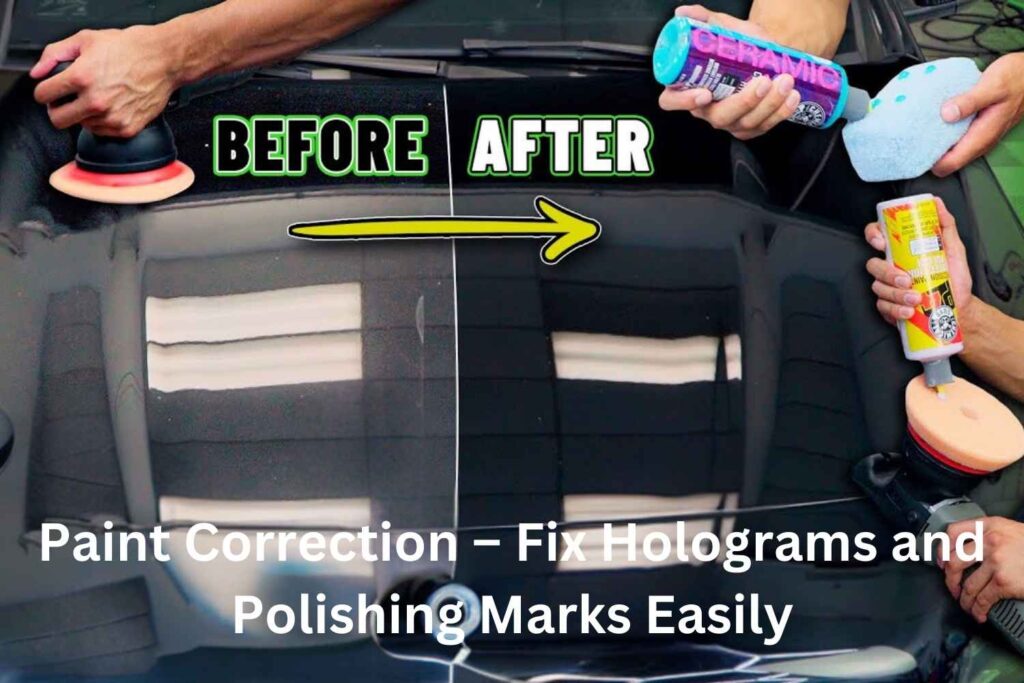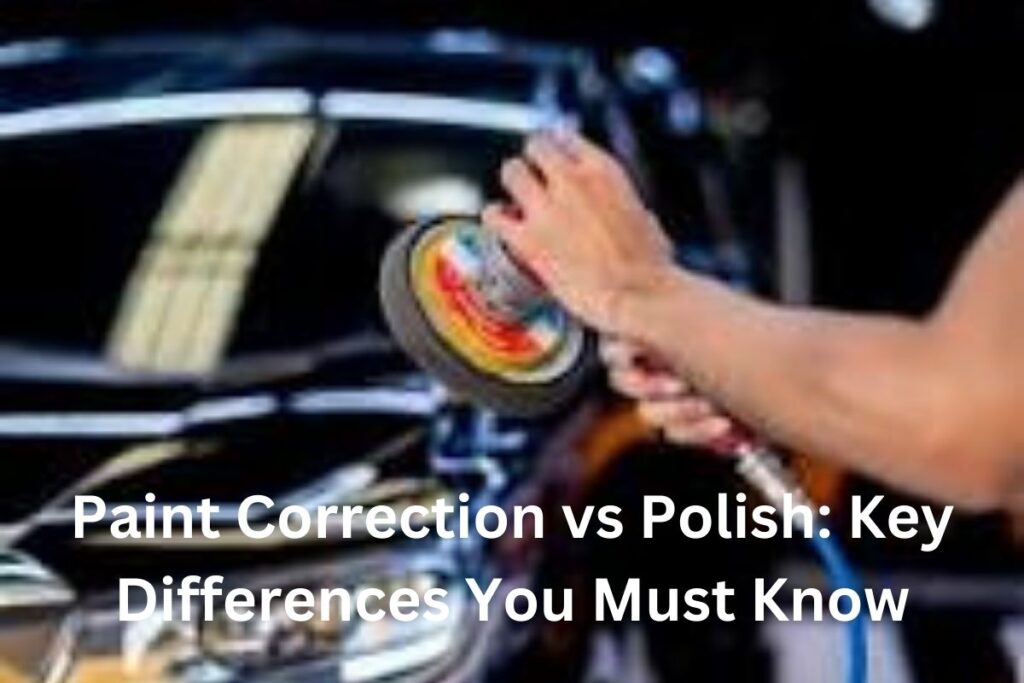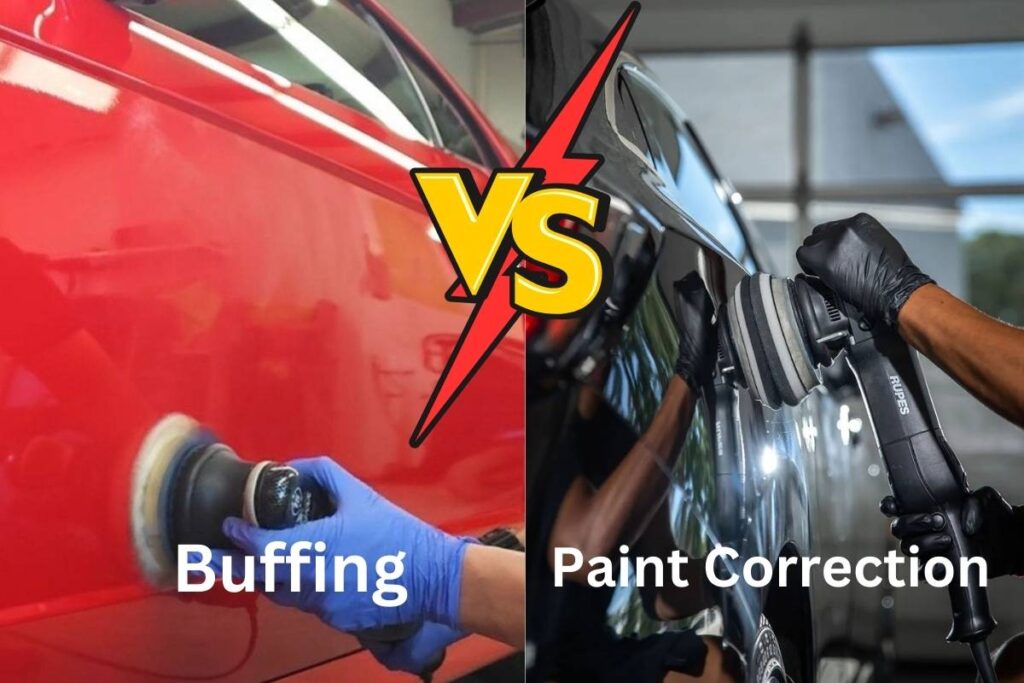Have you ever noticed small scratches, swirl marks, or faded spots on your car’s paint? These imperfections can make even a well-maintained car look dull and old. Many car owners rush to fix these issues without fully understanding the problem, which can lead to bigger damage.
This blog post will help you understand the common types of paint imperfections and what causes them. You will learn how to identify these issues and the best steps to fix them. By the end, you’ll know how to restore your car’s shine and keep it protected for the long term.
Table of Contents
ToggleCommon Types of Paint Imperfections
Understanding common types of paint imperfections makes it easier to solve them. Each problem looks different and needs a specific solution. These are the most common issues people face with car paint.
Swirl Marks
Swirl marks are tiny scratches on the paint surface. They form a circular pattern and are easy to spot under bright light. These marks often happen because of poor washing methods. Dirty sponges, old towels, or rough brushes leave swirl marks behind. Swirl marks make the paint look dull and uneven.
Fixing swirl marks is possible with polish. Polish removes a thin layer of paint to make the surface smooth. Always use clean tools to prevent more scratches in the future.
Scratches
Scratches are lines or grooves in the paint. They can be shallow or deep. A key scratch or contact with sharp objects leaves a noticeable mark. Deep scratches reach the primer or metal under the paint.
Fixing scratches depends on their depth. Shallow scratches can be polished out. Deeper ones need compounding. Very deep scratches might need professional repair.
Oxidation
Oxidation makes paint look faded or chalky. This happens when the paint reacts to air and sunlight over time. The clear coat breaks down, exposing the color to damage. Cars left outside without protection are more likely to have oxidation.
Polishing removes oxidation and restores shine. Protecting the paint with wax or sealant prevents it from coming back.
Water Spots
Water spots appear after water dries on the car’s surface. Hard water contains minerals like calcium and magnesium. These minerals stay behind and leave white marks or spots. They are more noticeable on dark-colored cars.
Water spots can be removed with special cleaners. Drying the car properly after washing also helps to prevent them.
Etching
Etching happens when acidic substances damage the paint. Bird droppings, tree sap, and bug splatter are common causes. These substances eat into the clear coat if left for too long. Etching looks like small craters or rough patches on the surface.
Etching can be fixed with a compound or polish. Always clean off acidic substances quickly to avoid damage.
Holograms
Holograms look like wavy patterns on the paint. These appear because of improper machine polishing. Poor technique or using the wrong pad creates this issue. Holograms affect the paint’s smooth finish.
Fixing holograms requires careful polishing with the right tools. Using a softer pad and proper technique solves the problem.
Chips
Chips are small holes in the paint. They usually happen when rocks or debris hit the car while driving. Chips expose the paint to rust and further damage.
Touch-up paint is a quick solution for chips. Applying a clear coat after repair adds protection.
Clear Coat Peeling
Clear coat peeling makes the car look old and neglected. This happens when the clear layer loses adhesion to the paint. Exposure to sunlight, heat, and poor maintenance cause this problem. It starts as small flakes but spreads over time.
Fixing peeling clear coat often requires repainting the affected area. Regular waxing helps to avoid this issue.
Paint Blisters
Paint blisters are bubbles that form under the paint. Moisture trapped between layers or poor-quality paint application causes this issue. Blisters weaken the paint and make it prone to peeling.
Fixing blisters usually needs professional attention. Moisture and damage must be removed before repainting.
Understanding these imperfections helps in deciding the right solution. Knowing what caused the issue prevents it from happening again. Regular care and maintenance reduce these problems and keep the car looking its best.
Causes of Paint Imperfections
Paint imperfections happen for many reasons. Understanding the cause helps you prevent them in the future. It also makes it easier to plan the correction process. Most problems come from daily use, bad maintenance, or exposure to the environment.
Improper Washing and Drying
Washing your car the wrong way causes damage. Using dirty sponges or rough brushes can scratch the paint. Drying with a towel that traps dirt does the same. People often forget to rinse properly, leaving behind soap or dirt. All these actions lead to swirl marks, scratches, and dull spots.
Environmental Factors
The environment is a major cause of paint problems. UV rays from the sun break down the clear coat over time. This process causes oxidation, which leaves the surface dull and faded. Acid rain also harms paint, leaving etch marks on the surface. Dust, pollen, and road salt add to the damage, especially during extreme weather.
Road Debris and Physical Contact
Small rocks, gravel, and road debris hit the car’s surface while driving. These leave scratches or chips in the paint. Parking near bushes or other vehicles can also cause damage. People brushing against the car with bags or keys may scratch the surface too.
Hard Water and Contaminants
Water with high mineral content leaves spots on the paint after drying. These water spots look harmless but can bond with the surface. Over time, they cause etching and require detailed cleaning. Bird droppings, bug splatter, and tree sap are also harmful. Their acids eat into the clear coat if not removed quickly.
Poor Detailing Practices
Using the wrong products during cleaning or polishing damages the paint. Harsh chemicals strip the protective layer and weaken the paint. Polishing with too much force or using the wrong pad leaves buffer trails. These trails make the paint look uneven and messy.
Exposure to Chemicals
Certain chemicals in car wax, cleaners, or sealants react badly with paint. Overuse or misuse of these products weakens the surface. Industrial fallout, like tiny metal particles in the air, sticks to the paint and causes tiny spots.
Aging and Lack of Maintenance
Over time, paint naturally fades due to wear and tear. Cars without regular maintenance are more likely to develop imperfections. Without protection like wax or a ceramic coating, the paint becomes vulnerable.
Understanding these causes helps you prevent further damage. Avoiding improper washing methods and protecting your car from the environment makes a big difference. Fixing these problems early keeps your car’s paint looking fresh and smooth.
Assessing the Severity of Imperfections
Not all paint imperfections are the same. Some flaws are minor and easy to fix, while others are deeper and need extra care. Assessing the severity of imperfections is the first step before fixing them. This helps you decide on the right tools and methods for correction.
Visual Inspection
Start with a close look at the car’s surface. Inspect it under bright light or sunlight. Good lighting shows scratches, swirl marks, and other flaws more clearly. Move around the car and check from different angles. This helps you spot hidden imperfections that may not be visible from one position.
Tactile Inspection
Run your fingers gently over the paint. A smooth surface feels even. Rough patches or bumps mean there are contaminants or damage. Dirt nibs, bonded contaminants, and oxidation are easy to feel. This step helps you find what your eyes might miss.
Using a Paint Thickness Gauge
This tool measures the thickness of the paint and clear coat. It helps you find out how deep a scratch or imperfection is. Deep scratches often go through the clear coat and into the paint. Knowing this helps you avoid over-polishing, which can thin the paint too much.
Checking for Swirl Marks and Buffer Trails
Swirl marks and buffer trails show up clearly under bright, direct light. Use a flashlight or inspection light to look for these. These imperfections scatter light, creating a dull or hazy effect.
Identifying Etching and Water Spots
Acidic etching from bird droppings or tree sap leaves visible marks on the surface. Water spots leave circular stains. To identify them, look for uneven textures or cloudy patterns on the paint. Use your fingers to feel the texture. Etching often feels rough or sunken.
Spotting Clear Coat Damage
The clear coat is the protective layer over the paint. Damage to this layer looks like dull patches or peeling areas. Inspect edges and corners carefully. These areas are more prone to damage from washing tools or bad detailing methods.
Testing with a Clay Bar
A clay bar can help confirm the presence of bonded contaminants. Rub a small section of the surface with the clay bar. If it picks up dirt or feels sticky, the surface has contaminants. This test shows if decontamination is needed before correction.
Documenting the Damage
It’s helpful to list the imperfections you find. Write down or take pictures of the damage. This helps you remember which areas need more attention. It also gives you a clear plan for the correction process.
Knowing the severity of imperfections is key to successful paint correction. A detailed assessment helps you avoid mistakes and choose the right methods. This step ensures the car’s surface gets the care it needs for a smooth and shiny finish.
Importance of Identifying Imperfections Before Correction
Fixing car paint is not just about removing marks. It is about understanding what caused the problem. Without this, fixing paint can lead to more damage. Using the wrong method or product can make small issues bigger.
Each type of imperfection needs a specific solution. Scratches and swirl marks need polishing. Deep scratches may require compounding. Water spots and oxidation need different treatments. Identifying the problem helps in choosing the correct method.
Spotting paint imperfections early saves money. Minor issues are cheaper to fix. Waiting too long can make the damage worse. This can cost more to repair. For example, fixing a faded clear coat is easier than repainting an entire car.
Knowing the severity of imperfections also matters. Minor scratches sit on the surface. Deep scratches cut into the clear coat or paint layer. Fixing these requires more skill. Using the wrong tool can ruin the finish or thin the clear coat.
Careful inspection improves the final results. It helps you achieve a smooth and shiny finish. It also keeps the paintwork looking original. Ignoring imperfections before correction leads to uneven results.
Identifying issues protects the car’s paint. Over-correction can damage the protective layers. This makes the paint vulnerable to UV rays, water, and dirt. Understanding imperfections ensures the correction process is safe.
A thorough inspection gives better control. It also prepares you for the steps needed to fix the paint. It is the foundation of proper paint correction.
Conclusion
Understanding and correcting paint imperfections is essential for keeping a car in great condition. Small problems like scratches, swirl marks, and water spots may seem minor. Over time, they damage the paint if left untreated. Learning how to spot and fix these issues helps protect the car’s value and appearance.
Each step in the process matters. Identifying the type of imperfection helps you pick the right solution. Preparing the surface ensures safe and effective correction. Using proper techniques restores the paint without causing more damage. Protecting the paint after correction keeps it shiny and smooth for longer.
Maintenance is the key to long-lasting results. Regular washing, waxing, and inspections prevent new imperfections. Simple habits like parking in shade or using a car cover add extra protection. Good tools and quality products make the process easier and more effective.
Caring for car paint is not just about looks. It also protects the surface from wear and weather. A well-maintained car stands out and feels new every time you see it. These steps are simple but make a big difference in the long run.
Taking care of paint imperfections is not difficult. With the right approach, you can bring back the shine and protect it for years. A clean and polished car always leaves a lasting impression.
Frequently Asked Questions (FAQs)
How often should I perform paint correction on my car?
It’s best to do paint correction only when needed, such as when you see scratches or swirl marks. Doing it too often can thin the paint. Regular washing and protection help reduce the need for correction.
Can I do paint correction myself, or should I hire a professional?
You can do minor paint correction yourself with the right tools and patience. For deep scratches or severe damage, it’s safer to hire a professional to avoid harming the paint.
How long does the paint correction process take?
The time varies based on the car’s size and the damage level. It can take from a few hours to a full day. Professionals may need more time for detailed work.
Will paint correction remove all scratches and imperfections?
Paint correction removes many surface flaws. But very deep scratches that reach the base layer may not disappear completely. In such cases, repainting might be necessary.
How can I maintain my car’s paint after correction?
Regular washing with proper methods, applying wax or sealant, and avoiding harsh conditions help maintain the paint. Parking in the shade and using car covers also protect the finish.







